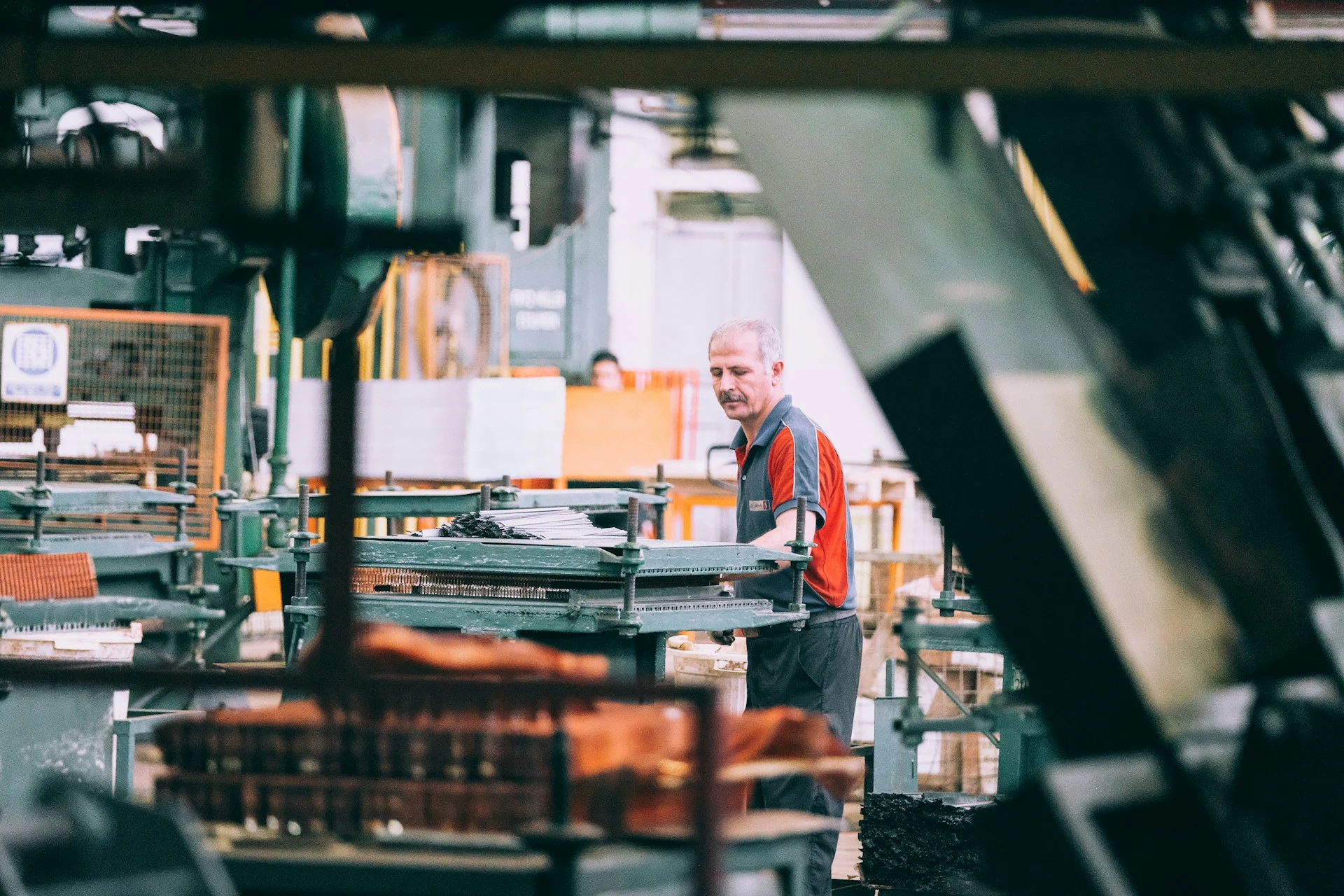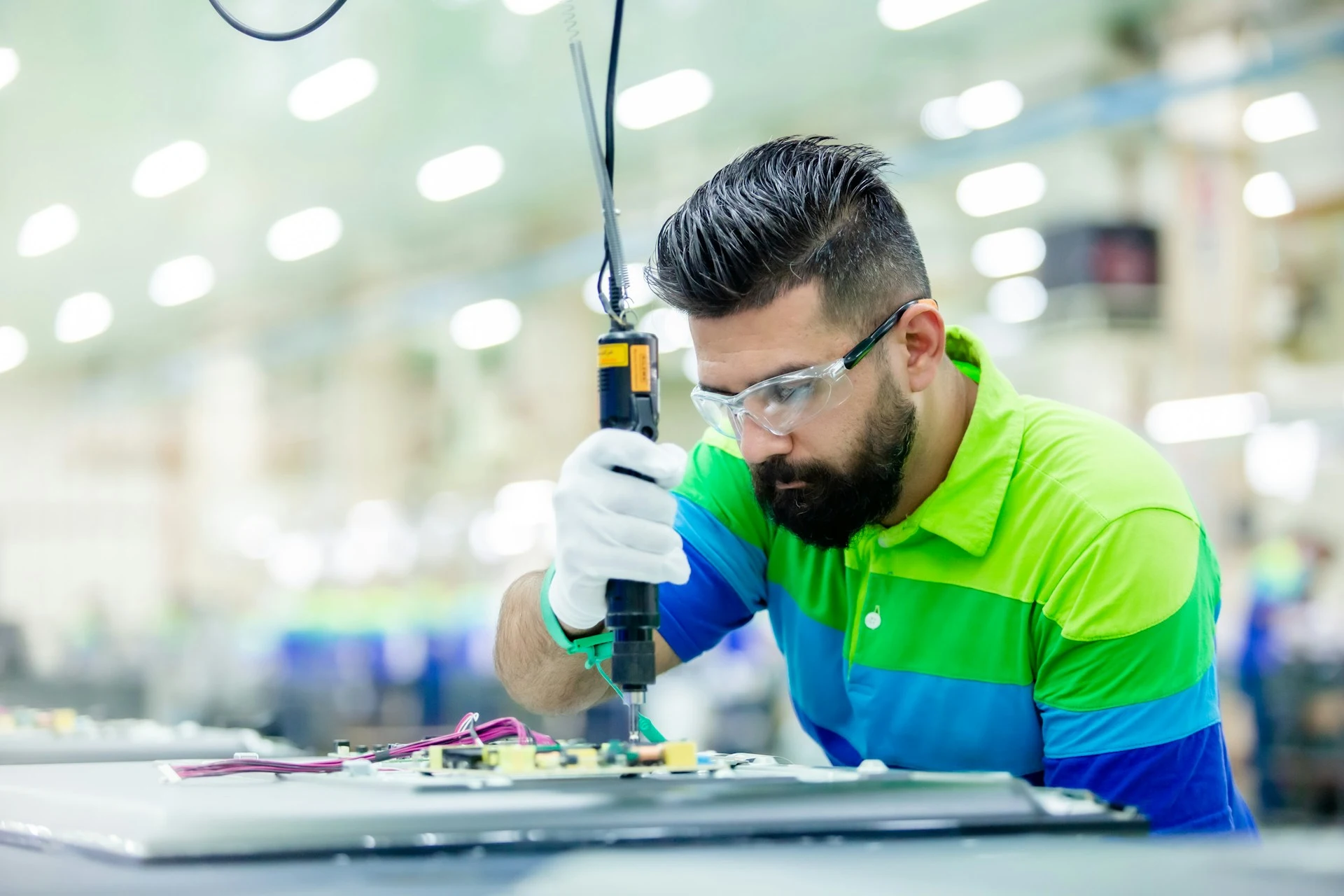Manufacturing employee retention is a constant challenge, costing the industry billions. But there are proven strategies to combat this crisis, starting with transforming how your shop floor communicates. There’s a hidden toll on your workforce: outdated communication makes skilled workers feel unheard and undervalued. This frustration is a major driver of attrition – research by Deloitte indicates that the cost of replacing a single manufacturing employee can reach upwards of twice their annual salary.
While competitive wages are essential, there’s a secret weapon to combat this crisis, and it’s not just about new technology. It’s about 2-way information highways, empowering workers and building an engaged, loyal workforce.
Reducing Downtime with Data-Driven Communication
Every minute of downtime represents lost revenue. But the true cost cuts deeper. When troubleshooting slows to a crawl due to miscommunication, skilled operators feel like their expertise is irrelevant. This impacts morale, but the financial impact is also real. McKinsey indicates that streamlining communication for root cause analysis alone can add $180 million to the bottom line for a $1 billion company.
A two-way communication strategy empowers those closest to the machines. It enables them to report problems, get near-instant support, and actively help reduce further downtime and their own frustration levels. This type of data-driven communication aligns with research demonstrating that integrating shop floor feedback improves decision-making, boosting quality performance. Employees become part of the solution, not just observers, which directly translates to higher manufacturing employee retention rates.
Action Insight: Implementing a change like improved communication often faces the misconception that it’s a massive, costly undertaking. Start small! Choose one critical area (high-error handovers, perhaps) and pilot a targeted solution. Early wins build buy-in for larger initiatives and prove the value to those focused on ROI.
The Hidden Cost of Inefficient Shift Handovers
Paper-based handovers and outdated systems cause rework, errors, and demotivate even your most dedicated workers. When mistakes occur due to poor information sharing, it’s not just parts that are wasted. Employees feel their efforts are pointless, reducing their willingness to consistently put in their best work. Industry reports indicate handover errors can cause up to 30% of productivity loss in a shift – imagine the cumulative cost over a year.
Structured digital handover tools protect that critical institutional knowledge, and demonstrate to employees that their contributions matter across shifts. Optimizing handovers with an eye towards the “Golden Zone” (the operator’s primary work area) streamlines the process even further, maximizing output alongside worker satisfaction. This boosts your bottom line and your reputation as an employer that values efficiency, while also boosting higher manufacturing employee retention rates.
Action Insight: Handover tools shouldn’t be rigid. Allow a space within the system for operators to flag things they deem important, not just what pre-set forms demand. This nurtures their sense of ownership, and can reveal process flaws standard metrics might miss – a valuable source of continuous improvement data.

Break Silos, Build Engagement: Retaining Manufacturing Employees
When communication breakdowns occur between production, maintenance, and other departments, everyone suffers. Workers feel like siloed cogs, not valued partners invested in the company’s success. This lack of connection harms retention and makes problem-solving agonizingly slow. Gallup’s 2023 State of the Global Workplace report highlights that highly engaged employees are 59% less likely to seek a new job with another company within the next year.
Centralized communication channels speed up problem-solving and decision-making, fueling productivity. But truly engaged workers need to feel heard. Encourage a culture where workers know that if they report a problem, it will be addressed quickly. This sense of impact is crucial to long-term retention, fueling a sense of ownership that can’t be easily replicated by competitors.
Action Insight: Don’t neglect the power of cross-departmental socializing! A simple quarterly lunch between maintenance and operators, where gripes and ideas are shared informally, can prevent issues festering in the digital feedback system. Human connection complements tech tools, and often gets more honest buy-in.

Employee Retention in Manufacturing: It’s Not Just About the Paycheck
While competitive wages are crucial, attracting and keeping the best workers demands more in today’s tight labor market. The PwC Workforce Hopes and Fears Survey, alongside the manufacturing workers survey in Q3 2023, reveals what employees are looking for:
- Flexible scheduling: This is vital, as it reduces burnout and helps employees balance work-life demands. Offering options, within the constraints of your production needs, shows you value workers as people, not just resources.
- Sense of purpose: Help employees connect what they do to the company’s mission. Feeling purpose-driven boosts commitment and makes even tough days on the shop floor more bearable.
- Recognition and growth: Mentoring programs demonstrate your investment in your people and open doors for advancement. Sadly, 71% of manufacturers in the survey say they need to improve their mentorship programs for frontline workers. This is an opportunity to stand out as an employer of choice.
Effective communication plays a pivotal role in all of the above. A positive, connected shop floor culture, fostered through targeted and efficient communication, is a powerful force for attracting and keeping your best workers.
Arma Chat: Your Communication Solution for Lower Attrition
Let’s face it: outdated communication isn’t merely frustrating, it drives up your costs and drives away your best workers. Arma Chat provides the targeted solutions you need to transform your shop floor communication, addressing the common challenges that lead to those costly problems:
- Downtime Headaches: When machine troubles go unresolved, skilled operators feel irrelevant. Arma Chat’s issue alerts get the right team working on the problem immediately, backed by real-time progress updates. This not only reduces downtime but also signals to your workers that their expertise is valued.
- Siloed and Slow: Communication breakdowns between departments leave workers feeling like “cogs in a machine.” Arma Chat eliminates those silos with centralized communication channels and empowers every worker to report issues. Rapid, collaborative issue resolution builds a sense of shared purpose and speeds up production.
-
Retention Woes: It’s not just about pay; lack of flexibility, feeling disconnected, and no room to grow make skilled workers look elsewhere. Arma Chat builds a more positive shop floor culture:
- Problem reporting tools give workers ownership and a sense of impact.
- Team coordination features nurture a sense of belonging and support.
- Data-driven insights help you design more flexible schedules or improve mentorship programs – proving to your workforce that you’re listening.
Arma Chat was designed specifically to address the daily operational challenges of US-based manufacturing. It offers quick implementation, integrates with your existing data for intelligent insights, and delivers tangible results.
Want to explore Arma Chat further? Book a demo OR subscribe to our newsletter for actionable manufacturing insights.
Accelerate and Fortify Your Operations
Stay ahead in the industry with our Arma – Weekly Roundup newsletter—subscribe now for exclusive insights and updates!
